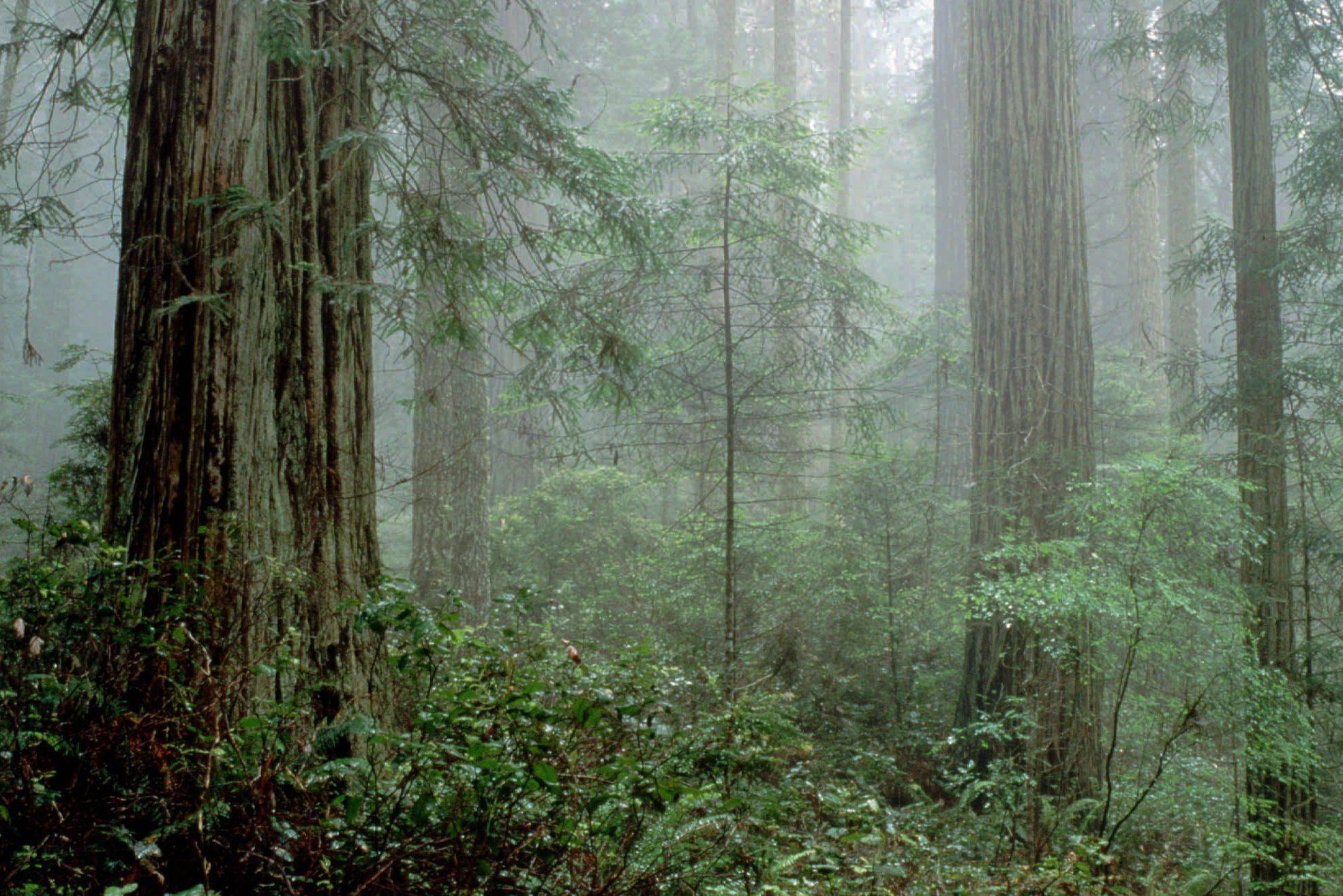Why Flat Earthers don’t believe in trees

A little over a year ago I was doing my rounds in Brooklyn, surveying trees for an invasive beetle species, when one of my co-workers shared an odd piece of information with me: Flat Earthers, people who believe the Earth is flat instead of spherical, also believe that trees don’t exist.
That’s a simplification of the concept, of course. The main idea is that within the overall Flat Earth theory, there are no more “real” trees left. According to them, the trees we see now are small ersatz versions of giant, 20-mile-high trees that used to exist on earth in ancient times. In short, the things we think are trees today are actually…bushes.
This idea was first floated to a wide internet audience by a Crimean YouTube user back in 2016, with a video titled, “There are no forests on Flat Earth Wake Up.” It got hundreds of thousands of views, and many spin-off versions have also been viewed hundreds of thousands of times.
The original video is no longer available as the account has apparently been terminated, but plenty of users have kept it in circulation, including this eerie, dubbed-over version:
The video posits that geological features we see today, such as the Devil’s Tower butte in Arizona, the Giant’s Causeway basalt cliffs in Northern Ireland, and Uluru in Australia, are actually remains of these ancient trees. According to the video, a massive disaster destroyed most of the Earth’s biosphere long ago, and with it, the ancient trees. What we call “trees” today are the puny remnants of all that’s left.
The video shows side-by-side shots of tree stumps with these geological features, asking viewers to spot the differences—which it then explains you can’t, because the only difference is material and size.
Material and size—those are some pretty big differences.
To say that the only difference between trees and geological features is size and material is like saying the only difference between me and Dwayne “The Rock” Johnson is strength and fame.
This may sound like obvious nonsense to many, but like the larger Flat Earth theory as a whole, it has since caught on. And as we’ve learned, the content-vortex of YouTube’s autoplay function has been a significant factor in perpetuating and reinforcing Flat Earth theory.
FAQs, tree edition
First they came for the shape of the Earth, and I didn’t speak out because I am not a geologist. Then they came for the trees.
I’m a certified arborist with a master’s degree in environmental science, and I also run an environmental consulting company. My day job is ensuring the city’s trees and vegetation are protected at construction sites, via an organization contracted by the New York City Parks Department. Basically, I’m a tree advocate.
So let’s define a few terms. First, what is a tree? A tree is a perennial woody growth plant that has areas of secondary cell division, which makes it able to grow wider year after year.
What’s the difference between a tree and a bush or shrub? The main difference is size: A shrub is a perennial plant that grows generally less than 2 inches in stem diameter. Some trees are bred to remain small and more shrub-like for aesthetic purposes, like yew and juniper.
What’s the difference between a rock and tree? Well, a lot. But one main difference is that trees are living organic things made largely of carbon, while rocks are inorganic non-living things composed of various minerals.
To say that the only difference between trees and geological features is size and material is like saying the only difference between me and Dwayne “The Rock” Johnson is size and fame—in other words, that’s a lot of difference.
I’d like to set up a straw man argument to help break down the no “real” trees theory: The large cats we see today (such as lions, tigers, and panthers) are not “real” cats. No, they are merely imitation miniature versions of “real” ancient giant cats that used to roam the land. Therefore, I don’t believe in cats.
(Side note, unlike giant rocks and trees, there is a connection between modern and ancient cats: The modern day leopard, for example, bares traits that indicate it may be a distant relative of larger species that used to exist, like the Smilodon Saber-tooth cat—although some ancient cat species weren’t actually bigger.)
But—the evidence! Look at the giant ancient cat statues that we see throughout Asia and parts of the Middle East. Look at the Sphinx in Egypt, or giant statues of guard lions in China. These are obvious signs that these massive, ancient, real cats existed!
… but wait. That’s not how evidence works.
Maybe I’m being too harsh on the Flat Earthers. I do, after all, agree with the deep-down ethos of their theory: that much of our natural environment has been destroyed. I see this destruction at the hands of humans, from overdevelopment, deforestation and general depletion of natural resources, rather than a mysterious massive disaster.
Around the world, there has been massive deforestation over the last 200 hundred years. Between 1800 and 2010, more than 2 billion hectares of forest have been lost. And as tons and tons of carbon continues to be released into the atmosphere, more and more species’ habitats have been devastated. We have lost something that will be difficult, if not impossible, for us to get back.
But let’s not get it twisted. Trees are real, even though we treat them horribly, and we need to do a better job of protecting the ones that still do exist. Although the theory that there aren’t any forests on Earth is nonsense, we are destroying the real ones we have at a rapid rate.
*** This article has been archived for your research. The original version from Quartz can be found here ***


